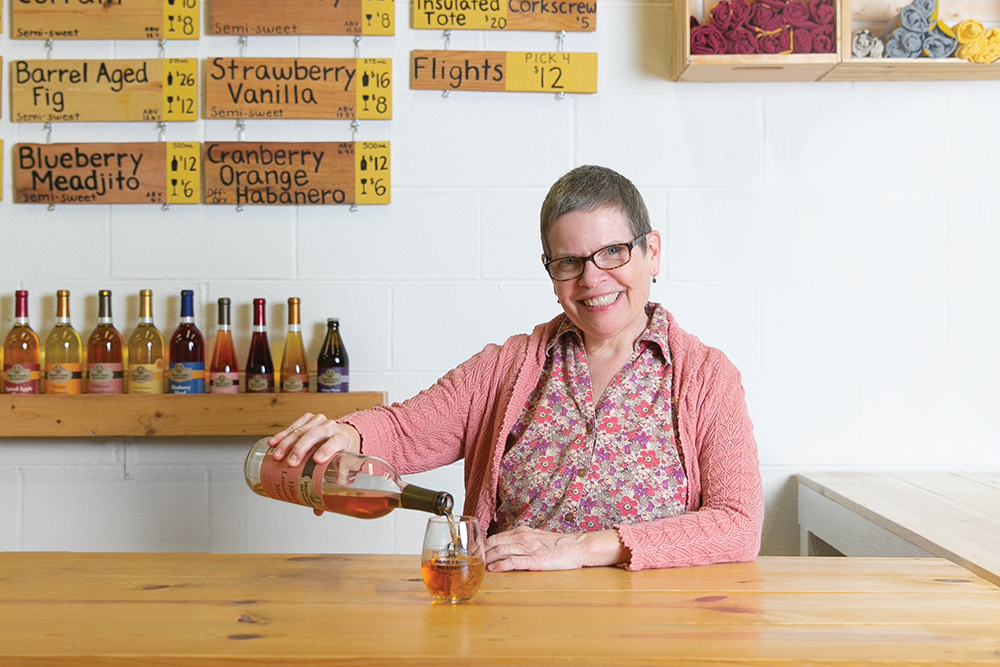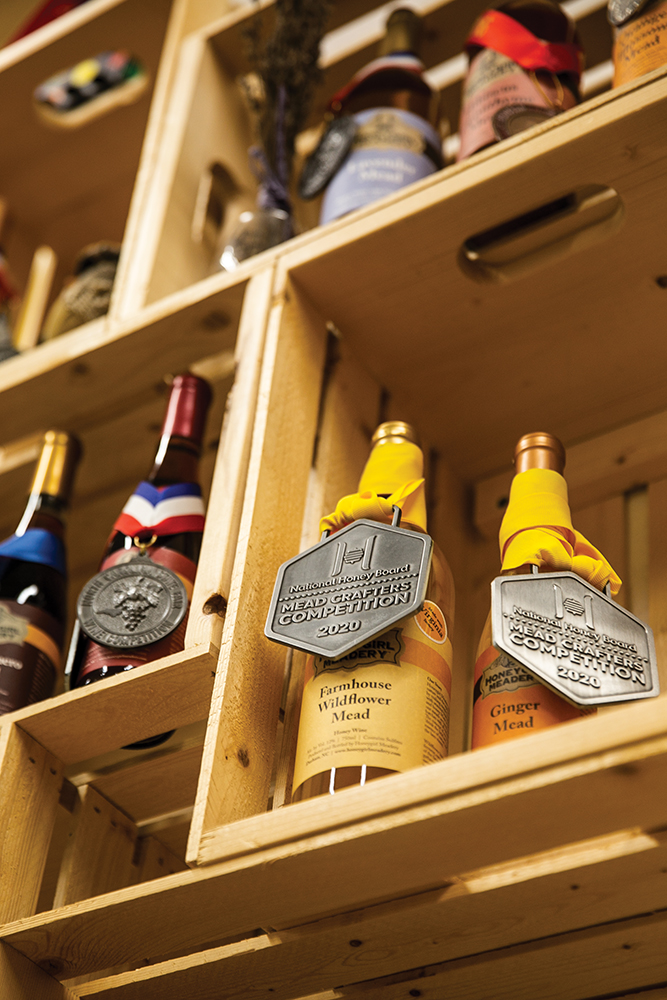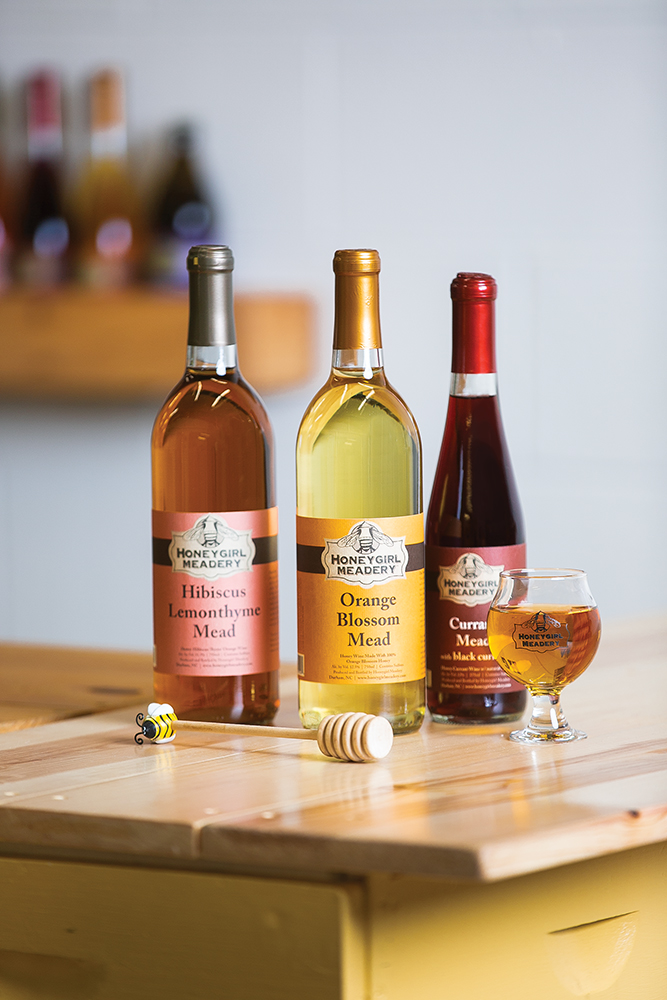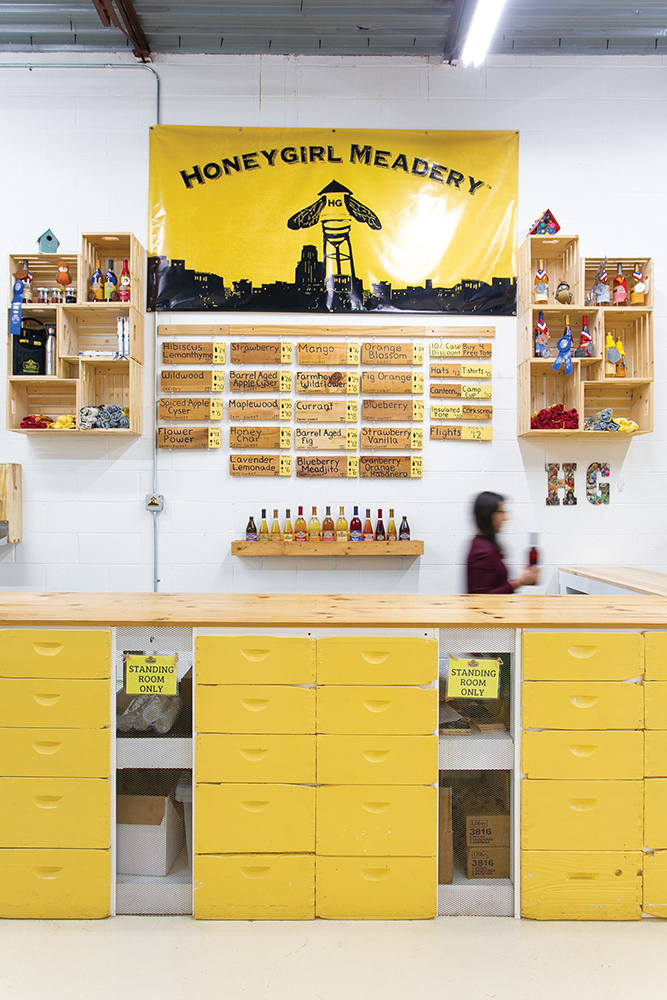Within the craft beverage boom, mead has grown in popularity — and local bars adding it to drink menus.
by Catherine Currin | photography by Taylor McDonald
Have you ever drunk mead? Outside some sort of Renaissance festival? I found myself asking this question to anyone who would listen when the editors at WALTER asked for a piece on the “nectar of the gods.” And like me, most of my friends had only heard of it in their history books. Mead was a mystery, at least for my palate, which is more often frequented by a fizzy pét-nat, crisp Sauvignon Blanc, or hazy IPA.
“Mead has such a rich history, and there are numerous accounts of its origin,” says Diane Currier, founder of Honeygirl Meadery in Durham. “I know it to date back to at least 9,000 B.C. when there were traces of early fermentation found in beverage containers in China.” Presumed to be the world’s oldest alcoholic drink, there are also early tales of mead from Egypt and India, and everyone from Vikings to Romans to modern-day drinkers have enjoyed the beverage, which is also known as honey wine.
Amid the craft-beverage boom — from funkier wines to beers of all colors, strengths, and infusions — mead has also seen an uptick in interest from home brewers and businesses. (Maybe bees are the new chickens?) There are about a dozen other meaderies in North Carolina alone, including Starrlight Mead in Pittsboro, Wehrloom Honey in Robbinsville, Black Mountain Cider & Mead in Black Mountain, and Fox Hill Meadery near Asheville. So after some preliminary reading, I headed to State of Beer as my testing lab. It’s usually my first stop for any beverage-related research, and when I checked their website, I was pleased to find a plethora of brands and flavors of the fermented honey.
There, I first picked up a mango-flavored mead infused with black pepper, from B. Nektar in Ferndale, Michigan. Mead tends to take on the flavor and form of the fruit or ingredients fermented along with the honey, I learned, and this one indeed had the lightest notes of mango. I expected the mead to be so sweet that I could only handle one sip, but it was almost bitter, and I was pleasantly surprised at its drinkability — a happy, if confusing, hybrid between a beer, cider, and wine.

Next up was a Ginger Mead from Honeygirl. Currier founded the meadery after winning a Blue Ribbon for her homemade Hibiscus Lemonthyme Mead at the North Carolina State Fair in 2012. Now almost ten years in, Honeygirl’s mead is sold across the state, with flavors ranging from Fig Orange to Lavender. For the mead I chose, Currier says she was inspired by a more modern flavor profile: the Triple Ginger Cookies from Trader Joe’s. “We used them as inspiration for our triple ginger approach: fresh ginger juice, freshly grated ginger plus ground ginger to add a rich, earthy flavor,” she says.
When I tasted the Ginger Mead, I discovered a hint of bitterness and spice that cut the smooth honey sweetness. This mead was most enjoyable in slow sips versus a big swig — complex, but not quite cloying, more like an aperitif than a drink-with-dinner wine. Currier says that many of her meads are meant for sipping, much like a bourbon. “The aging and depth of the dark wildflower honey we use resembles a spirit,” she says. Beyond the added flavor notes, the provenance of the honey itself can change the flavor of the mead.

One of Currier’s favorite things about mead, she says, is how creative you can get with both the ingredients and consumption. “Honey is so fascinating,” she says. “It’s the only thing insects create that we eat.” Despite mead’s ancient origins, Currier warns folks not to approach it too seriously, and to try it in different ways based on your mood. The folks at Honeygirl say their mead is at its most flavorful when served at the temperature of a traditional red wine, but also endorsed it as the base of a spritzer for a hot day (think: topped with Topo Chico over a cup of crushed ice). There’s no one way to consume mead.
“Meads are very seasonal and it’s fun to play with it,” says Currier. “It’s all about chasing and experiencing flavor.”





